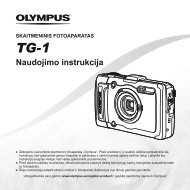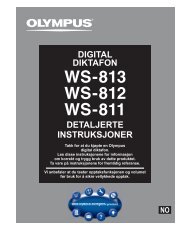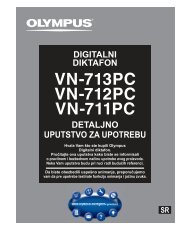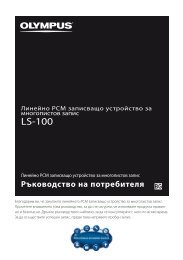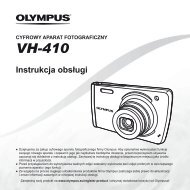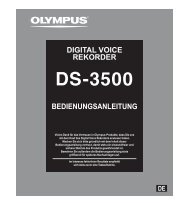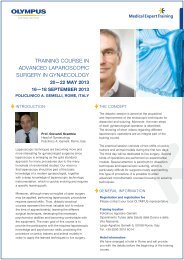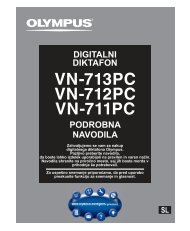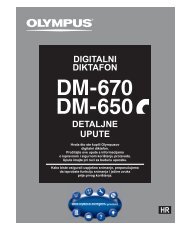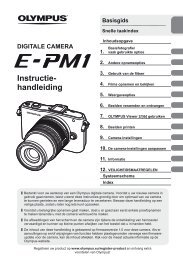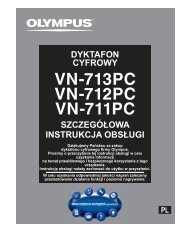INSTRUCTIONS - Olympus
INSTRUCTIONS - Olympus
INSTRUCTIONS - Olympus
You also want an ePaper? Increase the reach of your titles
YUMPU automatically turns print PDFs into web optimized ePapers that Google loves.
Chapter 3 Preparation and Inspection<br />
5. Using both hands, bend the insertion tube of the endoscope into a<br />
semicircle. Then, moving your hands as shown by the arrows, confirm that<br />
the entire insertion tube can be smoothly bent to form a semicircle and that<br />
the insertion tube is enough pliable (see Figure 3.3). Follow the above<br />
checks on both the softest and stuffiest conditions when the endoscope has<br />
the flexibility adjustment mechanism.<br />
Figure 3.3<br />
6. Gently hold the midpoint of the second bending section and a point 20 cm<br />
from the distal end. Push and pull gently to confirm that the border between<br />
the second bending section and the insertion tube is not loose. And also,<br />
gently hold the midpoint of the first bending section and the midpoint of the<br />
second bending section. Push and pull gently to confirm that the border<br />
between the first bending section and the second bending section is not<br />
loose.<br />
7. Inspect the objective lens and light guide lens at the distal end of the<br />
endoscope’s insertion tube for scratching, cracks, stains, gaps around the<br />
lens or other irregularities.<br />
8. Inspect the air/water nozzle at the distal end of the endoscope’s insertion<br />
tube for abnormal swelling, bulges, dents or other irregularities.<br />
EVIS LUCERA GIF TYPE 2TQ260M OPERATION MANUAL<br />
25





